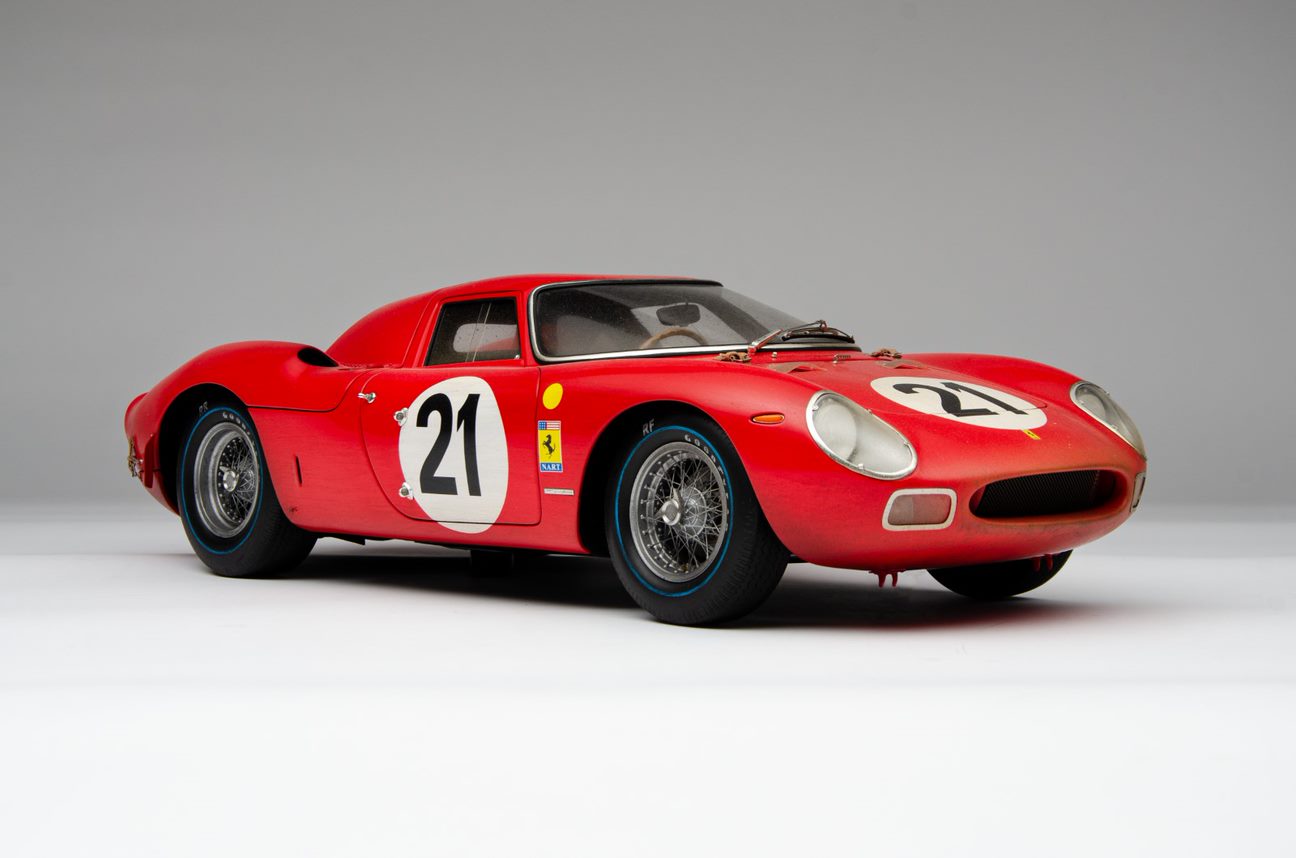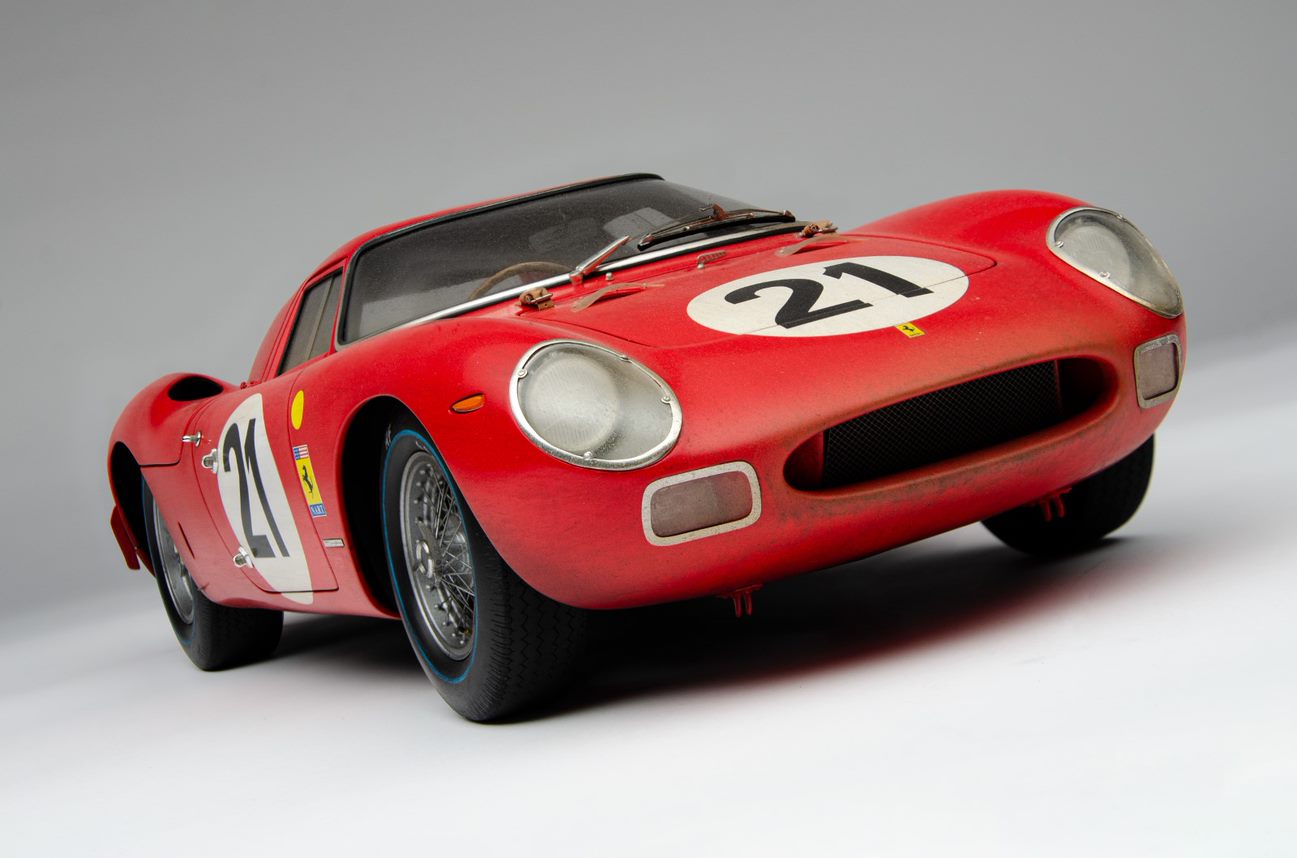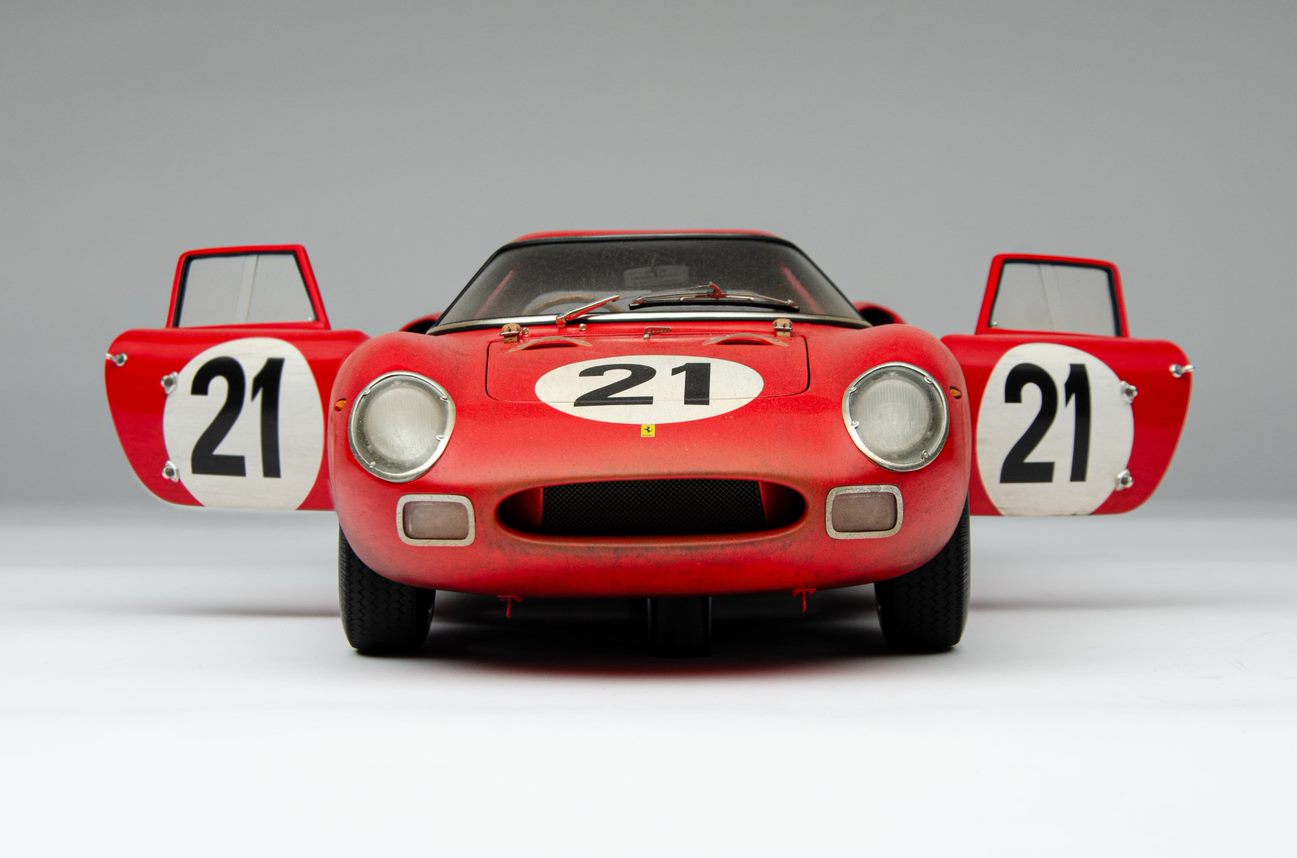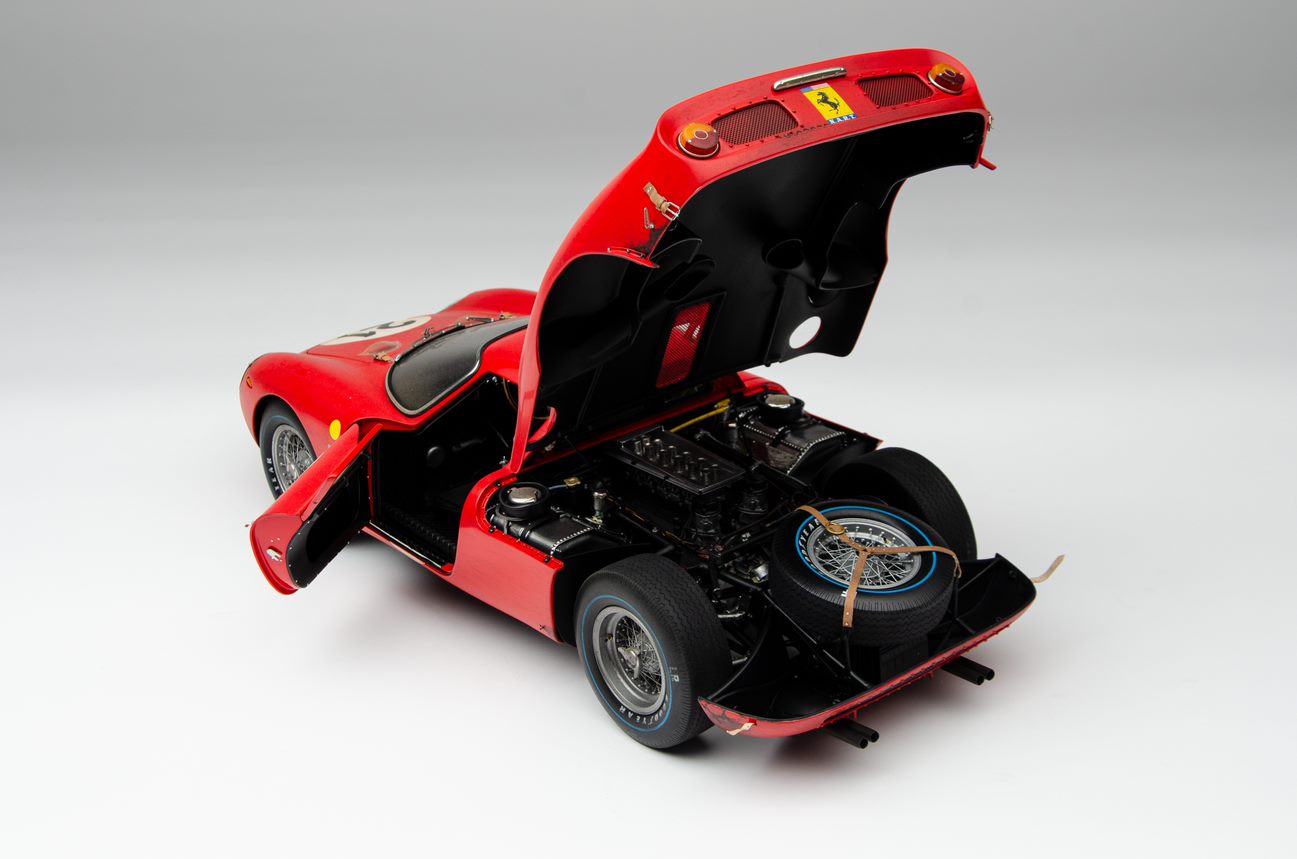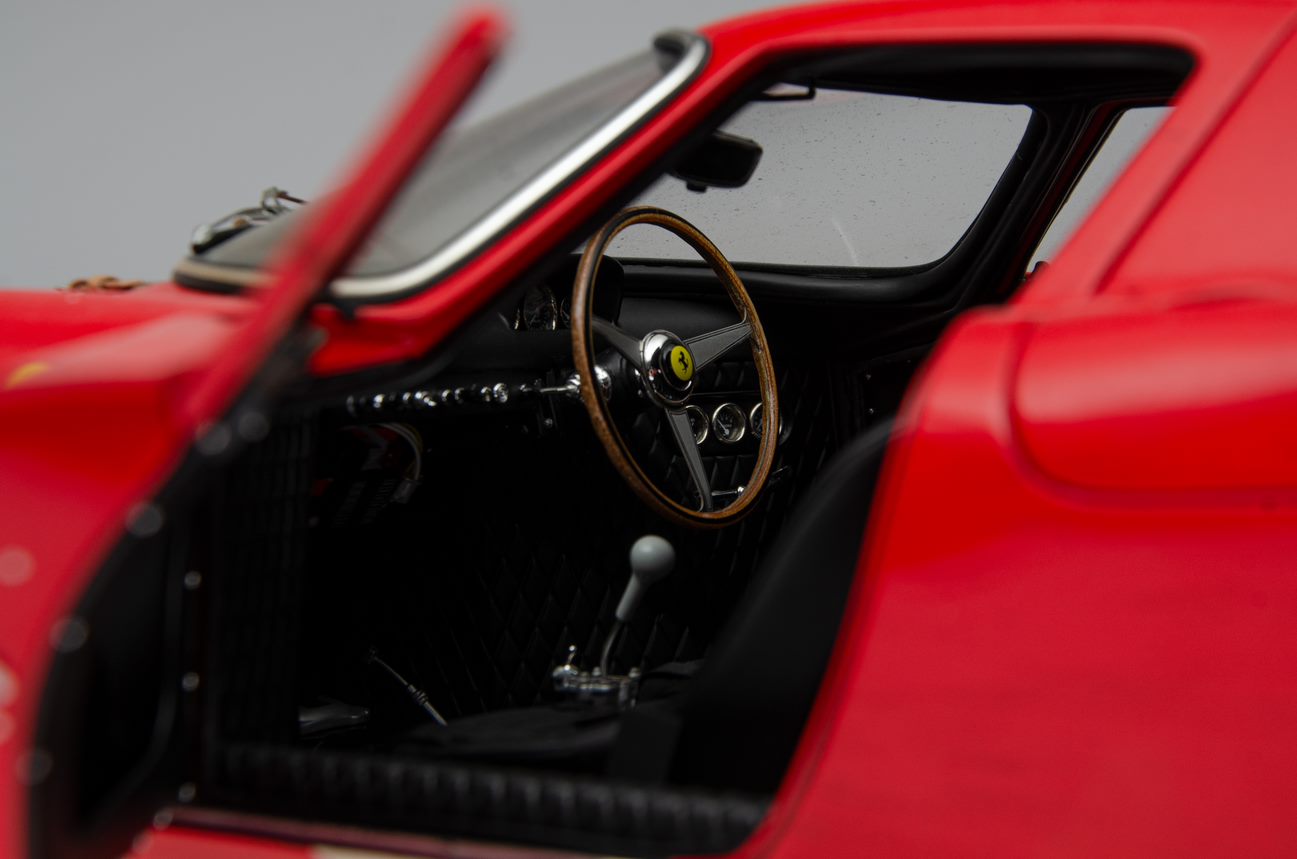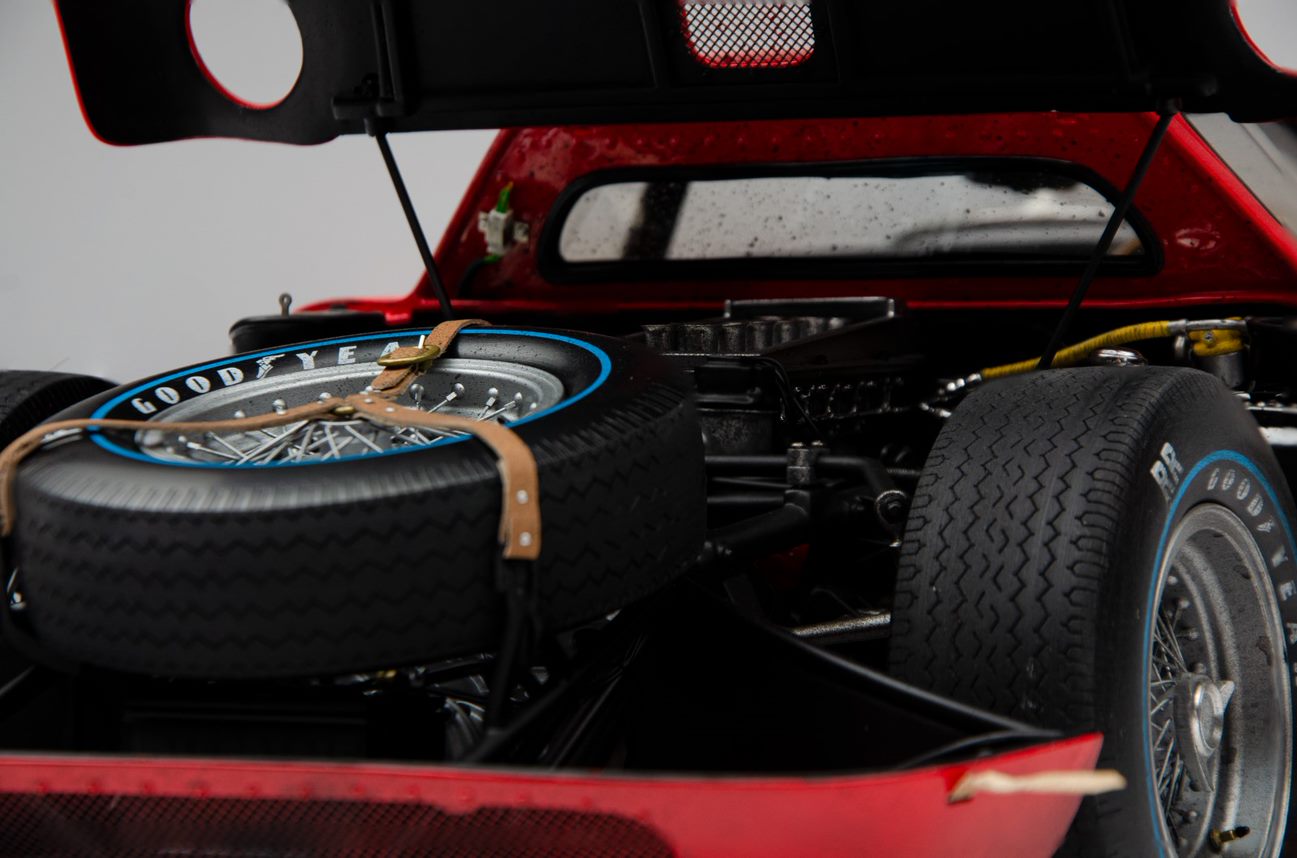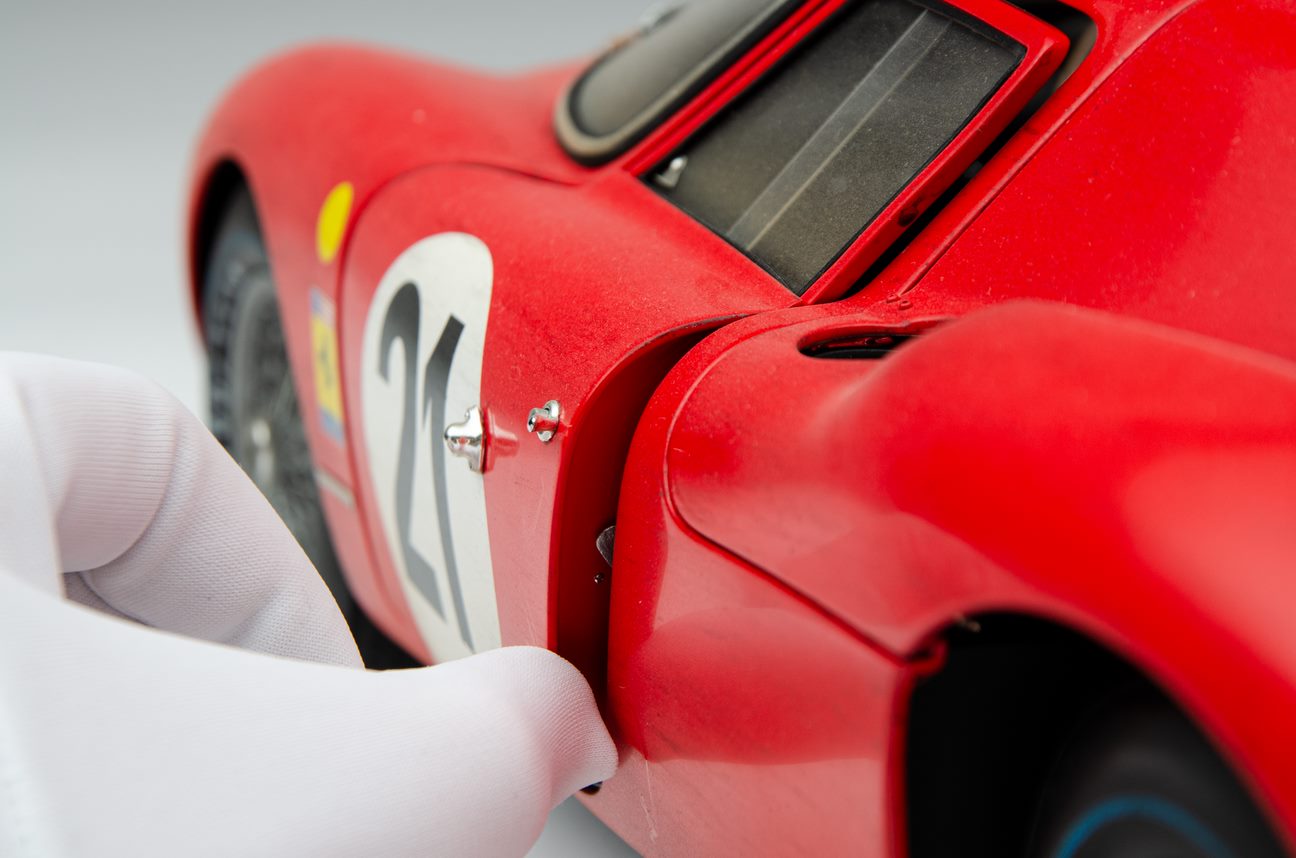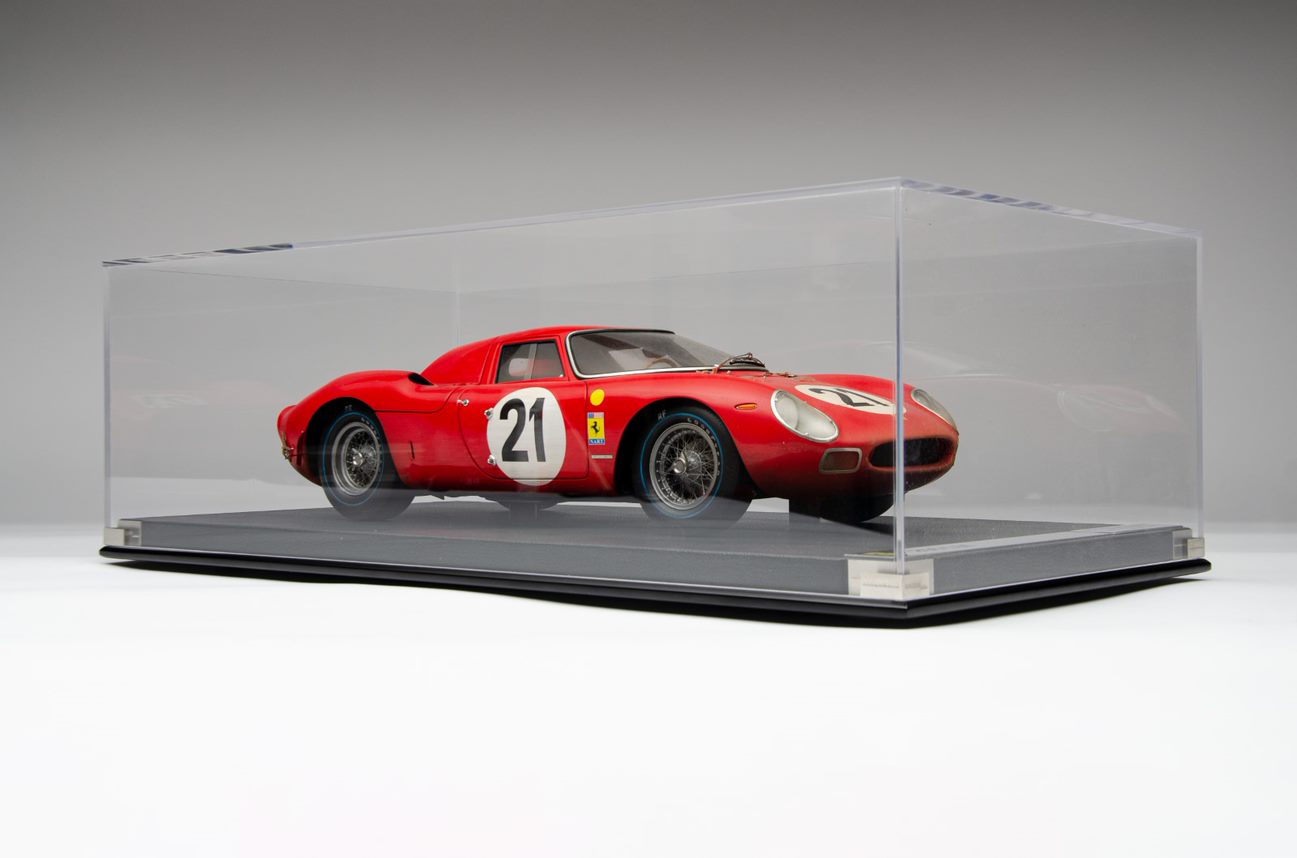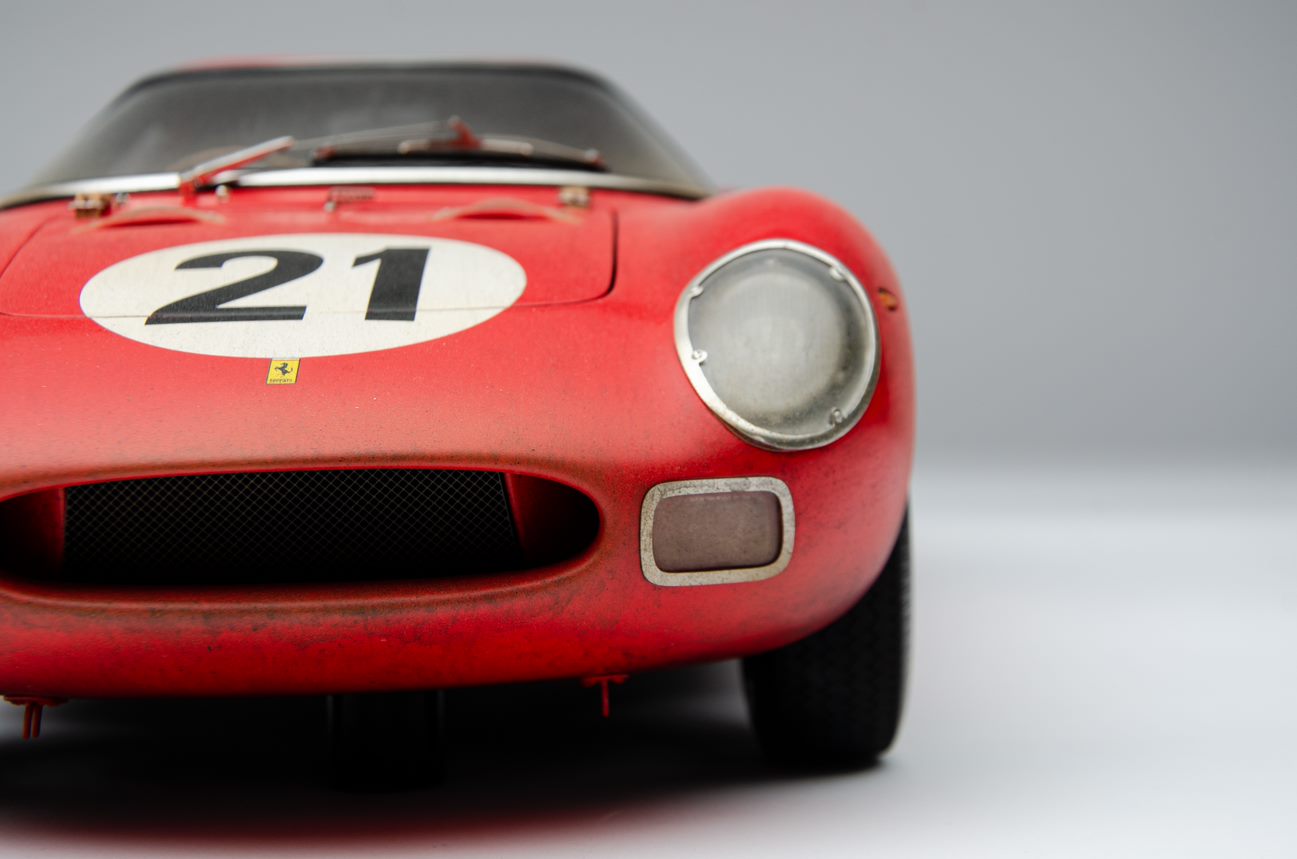SUPERB RANGE OF RARE, RACING AND CLASSIC MODEL CARS
Amalgam Ferrari 250LM 1:8 scale, hand weathered, limited edition of only 21 models Worldwide.
The Ferrari 250 LM The #21 250LM won Le Mans in 1965. Driven by Jochen Rindt and Masten Gregory and entered by the North America Racing Team (NART). It was to be Ferrari's last win at Le Mans.
This unique edition of just 21 models will be meticulously hand-painted and detailed by master model makers to show every detail of the race dirt as the car was wrestled to a surprise victory by Masten Gregory and Jochen Rindt at the Circuit de la Sarthe. Each of the edition will be accompanied by an archive quality A1 portrait size Rainer Schlegelmilch Giclée print of the car in the latter stages of the race, selected by Amalgam from the Motorsport Images collection.
The Ferrari 250 LM holds an exalted place in the pantheon of Prancing Horse legends. Though the FIA scuppered Ferrari’s plans to dominate the GT class by refusing to homologate the 250 LM, forcing it to compete directly against other prototypes, it still raced to considerable success with an extensive list of victories around the globe. The car’s finest moment came at Le Mans, taking a somewhat surprise triumph at the track it was named after. It remains Ferrari’s last overall victory at Circuit de Sarthe.
Presented at the Paris Motor Show in October 1963, the 250 LM was the berlinetta version of the 250 P prototype racer, sharing the same tubular space-frame chassis and running gear with just minor modifications. Its mid-engine layout enabled Sergio Scaglietti to wrap the flowing, voluptuous aluminium body around the chassis, with bulging rear arches flowing down to a kammback tail. The car stood at just 44 inches tall and featured a 3.3-liter, 320-hp V12 engine, enabling it to reach a top speed of 178mph (287km/h)
Ferrari’s engineers intended to produce the car as a road-going GT to replace the hugely successful 250 GTO. However, as only 32 chassis had been built between 1963-1965, the FIA refused to homologate the car, forcing the car to compete with true prototypes such as the Ford GT40 and decreasing its chances of victory. Nevertheless, the 250 LM was raced with considerable success around the world by both works and privateer teams. In 1964, it emerged triumphant in ten of the 35 races entered. In the 1965 World Sportscar Championship, the car contributed vital points towards Ferrari’s ultimate International Trophy for GT Prototypes triumph, being victorious at the Spa 500km with a 1-2 finish, the Mugello GP (earning all three podium spots) and the Coppa Città di Enna, as well as gaining further podiums in the Sebring 12 Hours, RAC Tourist Trophy, 12 Hours of Reims and the Bolzano-Mendola Hill Climb. The highlight of the 250 LM’s racing career was undoubtedly the 1965 running of the 24 Hours of Le Mans.
Luigi Chinetti’s North American Racing Team 250 LM entry, piloted officially by Jochen Rindt and Masten Gregory, enjoyed a legendary win, beating the arguably favoured Ford GT40s, and leading home a Ferrari 1-2-3. Pierre Dumay and Gustave Gosselin’s 250 LM finished second ahead of Willy Mairesse and Jean Blaton in a Ferrari 275 GTB. It is fabled that a third, unrecorded driver, Ed Hugus, delivered a stunning stint in this car in the small hours of the morning in lieu of Rindt, who had gone missing in action from the le Sarthe track.
The 250 LM is now a highly sought after collectors’ car, with most examples regularly auctioning for over ten million dollars. In 2015, chassis 6105 sold at auction for $17.6 million dollars.
This fine 1:8 scale model of the Ferrari 250 LM is as raced to victory by Masten Gregory and Jochen Rindt in the 24 Hours of Le Mans at Circuit de la Sarthe on 19 and 20 June 1965. The race was set to be the first real battle between Ford and Ferrari. The Americans arrived with no fewer than six GT40s, two of which were equipped with colossal seven litre engines. Ferrari’s three works and seven privateer entries may have outnumbered Ford, but they were all vastly underpowered. The #21 North American Racing Team entry, piloted by Masten Gregory and Jochen Rindt, qualified down in eleventh position, a full 12 seconds off the pace, and never looked like being involved in a fight for a podium, let alone a victory. This looked even less likely after the NART entry spent half an hour in the pits very early in the race having a misfire traced to nothing more serious than a dodgy condenser.
Ford started the race strongly but, by a quarter distance, it had already become a total disaster for the Americans and not one of their entries remained. It was Ferrari’s to lose. However, Ferrari’s own entries started to fade, with the two Maranello Concessionaries and Ecurie Francorchamps privateer cars retiring overnight. Then, the works team started to suffer. The drivers were struggling to slow the cars down and were told to use engine braking instead, putting an intolerable strain on their powertrains, two succumbing to gearbox failure, the third to engine trouble. A faulty batch of disc brakes was later discovered to be the culprit.
As the morning dawned the #21 car of Gregory and Rindt found themselves in second place, two laps behind the leader, another 250 LM with a far slower crew of Pierre Dumay and Gustave ‘Taf’ Gosselin at its wheel. The #21 car was gaining five seconds a lap on the frontrunner, leaving the spectators expecting a potential photo finish, right up until a tyre on the Belgian car exploded at high speed on the Mulsanne Straight. Despite severe damage, Gosselin managed to bring the car back to the pits, but vital time was lost repairing the damage and the car returned to the track behind the NART entry. Rindt and Gregory cruised to victory, despite the fragile differential, finishing five laps clear.
The Race Weathered edition of the #21 Ferrari 250 LM is limited to just 21 pieces.
Shipping guide - This model is shipped in a crate, to the USA for example, the shipping would be around £650
Our shipping cost does vary based upon the size of the model you purchase and the shipping location. Typical Uk shipping costs will be £9.99 unless the model is particularly large or valuable. Typical European shipping cost will be approx 30 Euros. Typical international shipping costs will be $60-100.
Sign up to the Revilo newsletter
Sign up to get the latest on sales, new releases and more.


